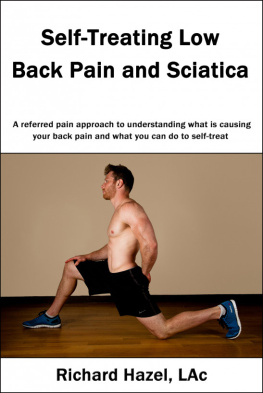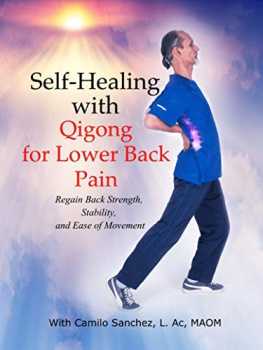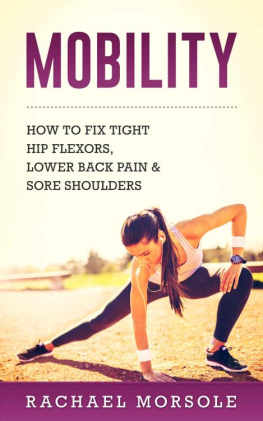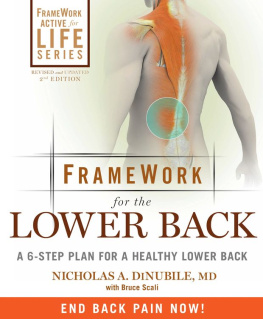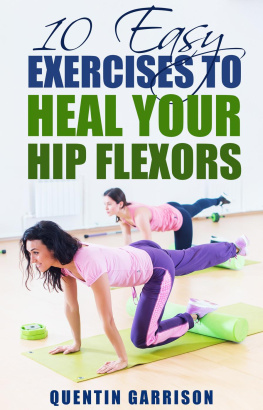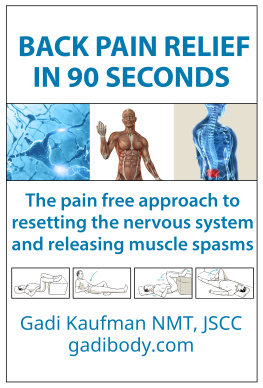FIX TIGHT
HIP FLEXORS
The Ultimate Cure to Reduce Joint Pain and Increase Muscle Flexibility
DAN MATTHEWS
Copyright 2020 by Dan Matthews - All rights reserved.
The content contained within this book may not be reproduced, duplicated, or transmitted without direct written permission from the author or the publisher. Under no circumstances will any blame or legal responsibility be held against the publisher, or author, for any damages, reparation, or monetary loss due to the information contained within this book. Either directly or indirectly.
Legal Notice:
This book is copyright protected. This book is only for personal use. You cannot amend, distribute, sell, use, quote or paraphrase any part, or the content within this book, without the consent of the author or publisher.
Disclaimer Notice:
This book is for informational purposes only and not intended as a substitute for the advice and care of your licensed healthcare practitioners, such as your physician or doctor. As with all health advice, please consult a doctor to make sure any recommendations in this book are appropriate for your individual circumstances. Serious or fatal injury can occur with any exercise or therapy program. This information is intended to be used for educational purposes only and implementation of these suggestions should be approved by your physician.
TABLE OF CONTENTS
Hip flexors
The hip flexors help balance the back and the pelvic muscles. Three key muscles regularly become tight and abbreviated because of exercises undertaken in day by day living. These are the iliacus, psoas major, and the rectus femoris. The iliacus and the psoas major are regularly alluded to as the iliopsoas because they share a similar inclusion at the lesser trochanter of the femur. The psoas minor embeds on the prevalent ramus of the pubis bone and for the most part supports the normal lordotic ebb and flow of the spine, however, it is just found in about 40% of the population.
The psoas major starts on the foremost surface of the lumbar vertebrae and runs over the pubis bone and embeds into the lesser trochanter of the femur. This muscle flexes the hip, yet in addition, it affects the lordotic bend of the lumbar vertebrae. The rectus femoris has a proximal connection at the hip bone socket and inserts into the tibial tuberosity. This long muscle has a job in both hip flexion and leg extension.
At the point when these muscles are under steady strain due to ergonomics and constant postural situating, they may turn out to be tight and shortened. This can bring cause them to pull forward on the lumbar vertebrae, causing hyperlordosis and making the pelvis tilt anteriorly. This is regularly found in individuals who stay seated for a drawn-out period, for example, office laborers, software engineers, and other people who end up sitting at a work area for quite a long time each day.
It is essential to give training on legitimate ergonomics, development, and self-care to these people. Working in the pelvic area isn't simple for some counselors and customers. There are warnings and restrictions that should be addressed and talked through before being addressed to these muscles. There are passionate and comfortable viewpoints about working in the lower pelvic area.
A few customers see this region as excessively close to home or too private to permit the therapist's hands to go here. Different observations include the internal organs, for example, the digestive organs, uterus, kidneys, and bladder. As the iliacus and psoas travel under the inguinal ligament and insert into the lesser trochanter of the femur, there is also the femoral triangle, which should be worked around. Body positioning can be valuable to help get to these muscles in a less intrusive manner while ensuring the comfort of the customer.
The hip flexors can be found linking the highest point of the femur, which is the biggest bone in the body, to the lower back, hips, and crotch.
There are different hip flexor muscles that all work to enable an individual to be mobile.
They include:
The iliacus and psoas significant muscles that are also referred to as the iliopsoas
The rectus femoris, which is a part of an individual's quadriceps
Abuse or overstretching of these muscles and ligaments can bring about damage and cause pain and reduced mobility.
Symptoms of a hip flexor strain
Many individuals who experience hip flexor strain will also have these symptoms:
Sudden, sharp pain in the hip or pelvis after an injury to the region
A squeezing or holding sensation in the muscles of the upper leg region
The upper leg feels delicate and sore
Loss of strength in the front of the crotch along with a pulling sensation
Muscle spasms in the hip or thighs
Inability to keep kicking, jumping, or sprinting
Reduced mobility and uneasiness while moving, including limping
Discomfort and pain in the upper leg region, which feels constant
Swelling or pain around the hip or thigh area
Tightness or stiffness after being stationary, for example, after resting
Constant impairing pain or uneasiness in the crotch or hip, in any event, when sitting
Decreased scope of movement particularly recognizable when kicking, lunging, running, and bending
Tenderness, swelling, and pain in the upper leg or crotch; the affected area may hurt when squeezed
Muscle spasms or potentially spasms in the hip or thigh that are painful and impact growth
Weakness in the groin area that may make certain exercises, for example, kicking, difficult or impossible
Change in step, pain, the diminished scope of movement, and different factors influence walking
Hip flexor pain is ordinarily worse during specific exercises or specific developments, for example,
Prolonged sitting, for example, sitting during the day for office work or a long vehicle trip
Going up or down stairs
Bending the knee to the chest (for instance, to tie a shoe)
Bending over to get something
Pushing off the affected leg to change direction while running or skating
An individual doesn't need to relate to these triggers to have hip flexor pain.
Hip flexor pain is frequently felt in the hip or crotch and is aggravated by specific developments, for example, kicking, rotating at high speeds, or moving the knee towards the chest. The hidden reason for hip flexor horrible pain may be:
Hip flexor strain or tear. A strain or tear refers to the damage caused to a muscle or ligament when it is stretched excessively far. Regularly, a hip flexor strain or tear happens when someone does something suddenly, for example, changing direction while running. Muscle tears are rated on a reviewing framework (gentle to extreme) dictated by the seriousness of pain, loss of movement, and shortcomings in the affected area.
Hip flexor tendinopathy. Ligaments are the stringy structures that connect muscle to bone. Hip flexor tendinopathy which incorporates both tendonitis and tendinosis might be brought about by intense damage, for example, from a fall or auto crash, or by damage, for example, from running, gymnastics, or soccer. Moreover, hip flexor tendinopathy can happen with age as the ligaments normally lose flexibility.
Iliopsoas bursitis. Iliopsoas bursitis happens when a hip's iliopsoas bursa gets aggravated. The iliopsoas bursa is a small, liquid-filled sac situated between the front of the hip joint and the iliopsoas muscle. This damage is frequently found in high-impact sports, for example, soccer, skiing, or artful dance. Iliopsoas bursitis can likewise be brought about by arthritis.








